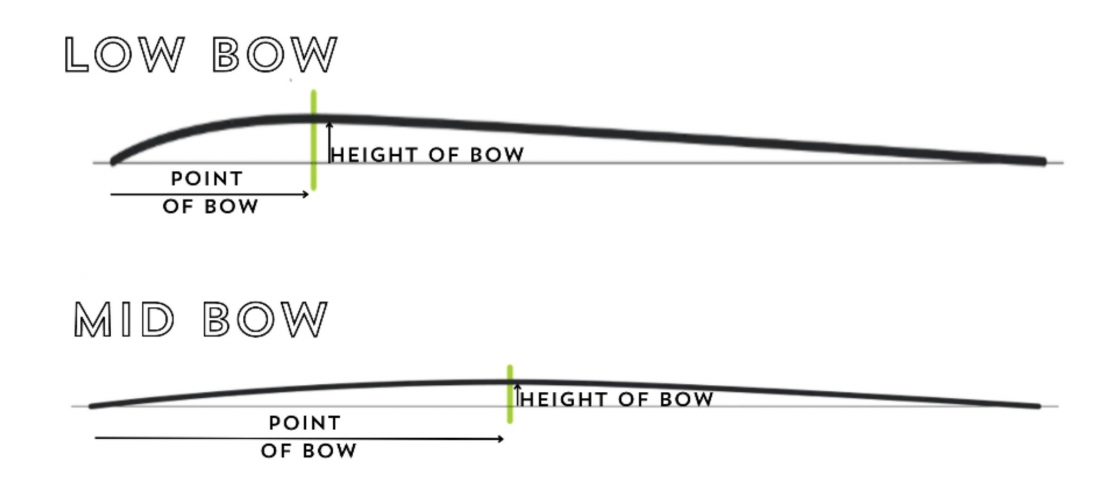Posted on: 14 September 2023
With such a wide range of hockey sticks available, finding the right one for you can be daunting task.
The following breakdown will explain multiple aspects of hockey sticks. Hopefully it will help inform you and allow you to find a stick that suits your needs best.
Firstly, you will need to find the right sized stick. The below size guide will act as a great starting point, but some variables might make you think about straying slightly from this guide.
SIZE
When looking for the right sized stick, comfort must be the main thing you are looking for. You don’t want a stick too small where you’re having to extensively bend to go flat or something too long where you don’t have control over the head.
If you are looking for a junior stick and are in between sizes, we would recommend going for the size above. We all know kids can grow quickly!
With senior sticks, it is not uncommon for players above 6ft tall to use a 36.5″ stick and likewise shorter players using a 37.5″ stick. Factors that players might consider when looking between senior sized sticks are; reach, tackle radius and manoeuvrability. However, the extra inch makes very little difference and players can find it relatively easy to move from one stick size to another.
BOW
The next aspect to contemplate when looking at your stick is the Bow. The bow of a stick is defined by the height and point of the bow. The bow point is the location on the stick, where the bend or curve of the stick is greatest and is given as a measurement from the bottom of ths sticks head. To measure a sticks height of bow, place the stick face bow on the floor and measure the distance from the floor to the maximum height of the stick, this measurement should be under 25mm due to the FIH regulations.
There are so so so many different variations of hockey bows, which can offer different pros and cons. To simply this aspect of hockey sticks, we will talk through the fundamental differences between midbow and lowbow sticks. Mid and Low bowed sticks are the two main categories of hockey sticks; however these can be further broken down into more and less aggressive bows. Essentially a low bowed stick has a shorter point of bow, meaning the most aggressive curve of the stick is closer to the sticks head. It is also common to find that midbow sticks will have a shorter bow height and this again makes the bow less aggressive than a low bowed stick.

With this less aggressive bow, Midbow sticks are often considered more suitable as an entry or intermediate level stick, which aids players in developing essential skills like; hitting, slapping, pushing and trapping.
On the other hand, Lower bowed sticks allow players to get underneath the ball much. This makes lifting the ball much easier which can aid players with 3D skills elimination, lifted passes over sticks or aerial passes over the heads of players. The more aggressive bow also offers more ‘whip’ when flicking which again can aid in aerials but also longer push passes and drag flicking.
Sticks can also have a concaved bow, which helps keep the ball on the stick through the flicking motion. This concaved bow enhances the ‘whip’ which can help generate extra power in a players flicking.
Another element of a stick to look at is the carbon percentage. Higher carbon percentage sticks are favoured more within elite hockey as they offer more power behind hits and slaps due to their stiffer nature. Stick prices tend to match their carbon percentage with more expensive sticks generally having a higher carbon percentage. However, this does not mean higher carbon percentage sticks are better for you. Sticks with lower carbon percentages give a softer touch and feel and can aid players with touch and control. It about finding the balance for what you require in a stick.
It is advised to move up carbon percentages as you develop as a player. Players new to hockey will benefit from the softer touch and feel of a lower carbon stick as they develop their skills whilst more experienced player who are more assured in their ball control will gain more out of a higher carbon stick.
The sticks carbon percentage does not impact its weight. Hockey sticks have a set weight regardless of the carbon percentage or other parts of the compositions. Heavier sticks often provide greater power in hitting the ball however, it is common for attacking players to favour a lighter stick to improve pick up, swing, and allow for quicker movement when in a tightly packed circle.
We hope that this has supplied you with the information to find the stick that best suits your game. If you are still unsure on what stick to buy, come into store get a feel for the sticks in our range.
